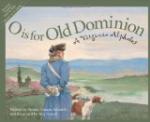When the tide fell, it disclosed many roots and stumps in the channel; and the sight of each one added to our sense of importance in having successfully navigated the stream. Later, some of the men from the Kittewan farm came along in a rowboat.
“Well, you did make it after all,” they said. “We’ve been looking for you all along the creek, expecting to find you hung up on a cypress stump.”
CHAPTER XVI
IN WHICH WE GET TO WEYANOKE
As Gadabout lay moored in Kittewan Creek, the houses of Weyanoke were not very far from us, and one of them was in plain sight; but the question was how to get to them. Wide stretches of marsh bordered the stream and a wire fence ran along the reedy edge. We began to be impressed with the advantage of approaching such a plantation in the customary way, by the river front.
But we had not lost zeal for the unconventional, and fortune favoured us. A man passing in a skiff told us that a road leading to the Weyanoke houses could be reached by rowing up a tiny bayou that joined the creek a short distance above us.
This bayou, he explained, was not one of those ordinary waterways that you can travel on just any time. In fact, for a good deal of the time it was not a waterway at all. But usually, when a half tide or more was in, a rowboat could be taken up to the landing near the road.
So, one afternoon an untenanted houseboat was left lying in the sunshine and the marshes, all aboard having taken to the shore-boats and gone in search of the more solid portions of Weyanoke. Weyanoke is an Indian name and means “land of sassafras.” In 1617 the Indian chief, Opechancanough, gave this land of sassafras to Sir George Yeardley, afterward governor-general of the colony; and his ownership gave early prominence to the place, though he did not live upon the plantation that he had here.
After several transfers of title, Weyanoke came into the possession of Joseph Harwood in 1665. Through many generations both the upper plantation and the lower one remained in the Harwood family; and Upper Weyanoke is still owned by descendants of Joseph Harwood, the family of the late Mr. Fielding Lewis Douthat.
[Illustration: Lower Weyanoke.]
In our search for this land of sassafras, a short row up the creek took us to the opening into the bayou. Here, there was a break in the wire fence along the creek guarded by a queer water-gate that hung across the entrance to the side stream. Holding the water-gate open and pushing our boats through, with what skill might be expected from persons who had never seen a water-gate before, we started up the tiny, winding channel.
On either hand the reeds were so tall that we were quite shut in by them; but reeds are never so beautiful as when outlined against the sky. Here and there, a stump or a cypress tree stood out in the water almost barring the way. Ducks were swimming about or absurdly standing on their heads in the shallows, and at our coming went paddling off into the sedges quacking their disapproval. Before the water quite gave out, we reached the little landing. Now our way led up from the lowland between hazy autumn fields where crows were busily gleaning and insects shrilled in shock and stubble.




